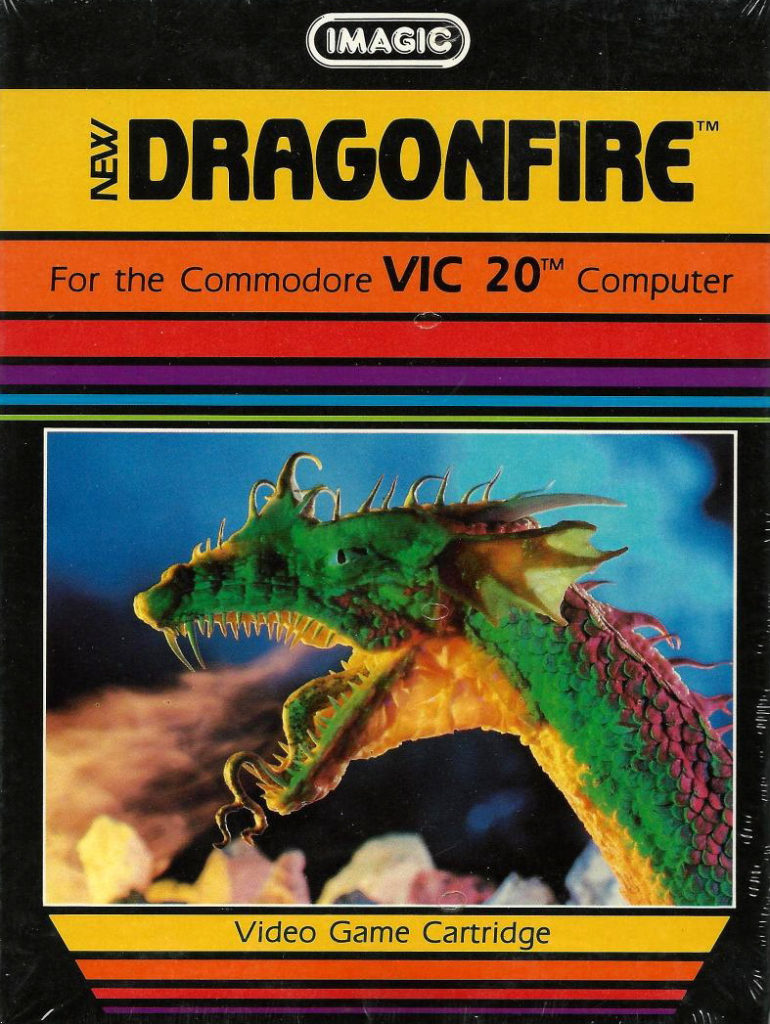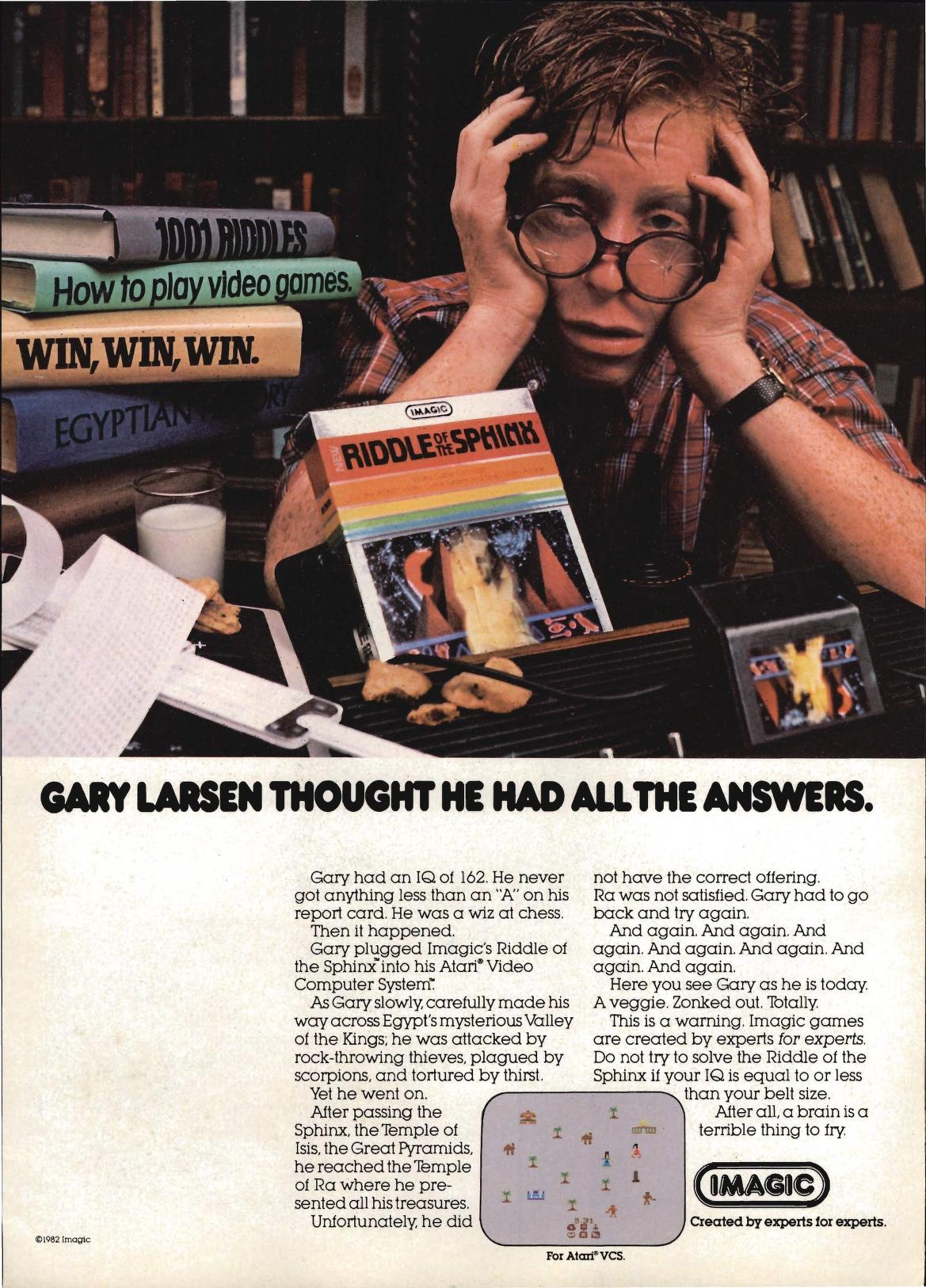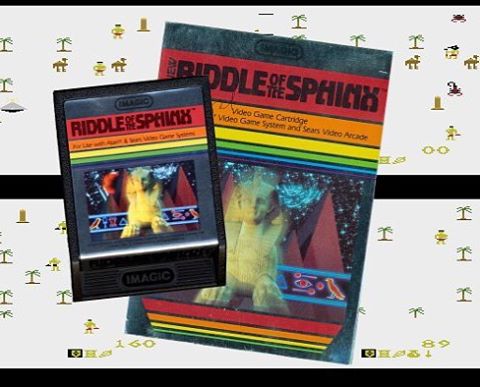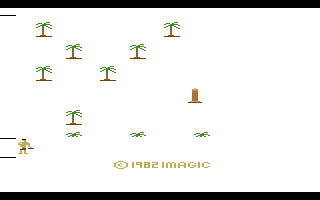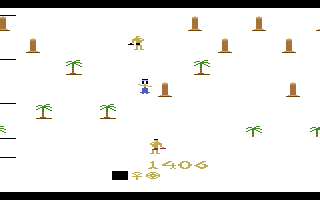Dragonfire, Commodore VIC 20
https://darth-azrael.tumblr.com/post/189110245178/vgjunk-dragonfire-commodore-vic-20
Dragonfire was originally released by Imagic for the Atari 2600 in 1982. It’s one of Imagic’s better games and while it is relatively simplistic as most Atari 2600 games are, it is fun enough to keep you interested.
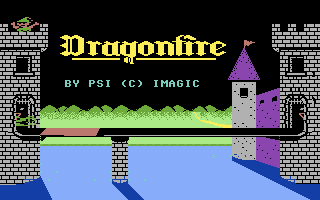
Game play is fairy straightforward. There are two unique stages. In the first stage you are attempting to cross a draw bridge, from one side of the screen to the other, while avoiding fireballs from a dragon that you can either attempt to jump over or duck under. There’s also the weird in-between kneel jump… The second stage switches to an overhead view inside the castle. In this stage you are attempting to collect the various treasures that are scattered about. In this stage the dragon lobs fireballs at you from the bottom of the screen. Once you have collected all of the treasures, a door will appear and you can exit. After this, the stages repeat only the fireballs come faster. You have a total of seven lives and a hit from a fireball will cause you to lose one of them.
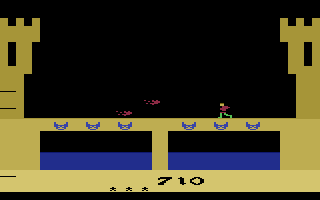
While Dragonfire was initially released for the Atari 2600 in 1982, it was ported to various other systems over the next few years. Later in 1982 is was released for Intellivision. In 1983 it was released for the VIC-20 and Spectrum. In 1984 it made its way to the Apple II, Commodore 64, ColecoVision and the TRS-80 Color Computer (which I think was the first version I ever played at a friend’s house.) While the graphics are better on the later version, game play is very similar and just as fun on the 2600 as on the other versions.
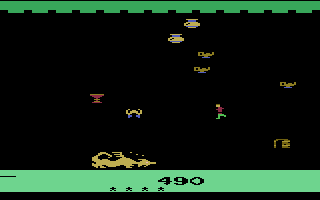
I am not aware of any rereleases for this game so you will have to track down an original if you want to play it. The Atari 2600 cartridge is pretty easy to come by and worth having if you are a collector for that system. Cartridge versions are also available for the VIC-20, ColecoVision, Intellivision and CoCo. I believe all the others were disk based. The source code was also released by the author to the public domain in 2003 so you can also develop your own port if you want.
